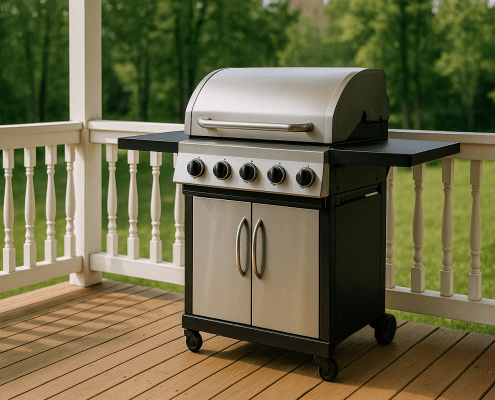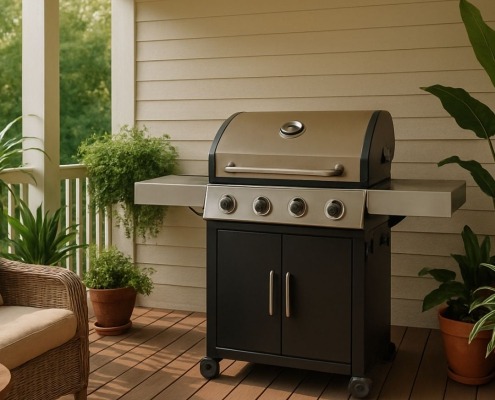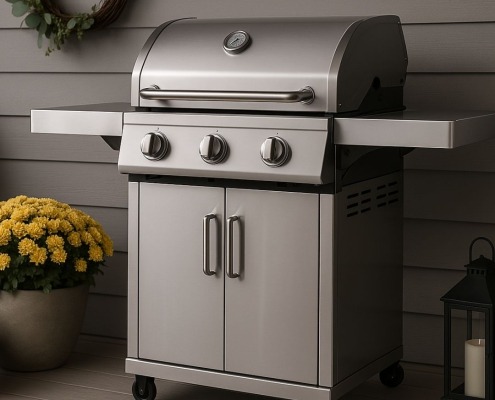A Simple Guide on What Makes an Infrared Grill Different
Steven E / Thursday April 24, 2025
Are you curious about the latest grilling technology and looking to elevate your outdoor cooking experience? Enter the world of infrared grills! Infrared grills have gained popularity among grilling enthusiasts for their ability to deliver fast and high-quality results. In this article, we’ll explore the fascinating world of infrared grills, how they work, and the advantages they offer.
The information in this article may not apply to your specific appliance model. We recommend consulting your manufacturer’s documentation or contact us with any questions.
The science behind it
Unlike traditional gas or charcoal grills that rely on convection heat to cook, infrared grills use infrared burners or cooking grates to emit intense infrared waves, which directly heats the food’s surface.
Infrared waves are a type of electromagnetic radiation that falls within the electromagnetic spectrum, nestled between visible light waves and microwaves. Certain wavelengths within the infrared range have the ability to create heat. This is because the infrared waves interact with the molecules in an object, causing them to vibrate and increase in temperature. This heat-producing effect is what makes infrared radiation useful for a variety of applications, including cooking systems.
The high heat output of infrared grills enables them to reach temperatures well above 700 degrees Fahrenheit (371 degrees Celsius) within minutes. This makes them ideal for achieving a quick sear on meats, creating a flavorful crust while sealing in the natural juices.
It’s worth noting that infrared grills come in various types, including traditional infrared grills, hybrid infrared grills, portable infrared grills, built-in infrared grills, infrared searing stations, and even infrared charcoal grills. These different types offer varying features and functions that cater to different cooking preferences and outdoor cooking setups.
How it works
- The grill has a heat source, such as a gas burner or electric heating element, that produces infrared radiation.
- The infrared radiation is emitted from the heat source and travels through the air to the food.
- The food absorbs the infrared radiation, which causes the molecules in the food to vibrate and generate heat.
- The heat from the infrared radiation cooks the food, rather than the direct heat from a flame or electric element.
- The grill has a reflective surface, such as a metal grate or grill plate, that helps to reflect the infrared radiation back up towards the food, ensuring that it is cooked evenly.
- The temperature of the grill can be controlled by adjusting the heat source or by using a thermostat to regulate the amount of infrared radiation being emitted.
Advantages of using an infrared grill
Faster cooking times
Infrared burners can reach high temperatures rapidly, reducing the preheating time and allowing you to cook your meals in less time compared to traditional grills. This is especially beneficial when you want to grill a meal quickly or have limited time for outdoor cooking.
High heat output
The infrared burners can generate temperatures well above 700 degrees Fahrenheit (371 degrees Celsius), which is ideal for achieving a perfect sear on steaks and other meats. The high heat helps create a flavorful crust on the food’s surface while sealing in the juices, resulting in delicious and tender grilled dishes.
Even heat distribution
The infrared radiation emitted by the burners ensures that heat is evenly distributed, minimizing hot spots and cold zones on the grill. This even heat distribution allows for more precise control over the cooking process and helps prevent unevenly cooked food.
Energy efficiency
Their ability to reach high temperatures quickly means less energy is wasted in the preheating phase. Additionally, the direct transfer of heat from the infrared burners to the food’s surface reduces heat loss and ensures that the majority of the energy is utilized for cooking.
Reduced flare-ups and smoke
Since the infrared burners primarily cook the food’s surface, excess drippings and fats are less likely to come into direct contact with open flames, minimizing flare-ups. This not only enhances safety but also helps prevent charring and ensures the food retains its natural flavors. Furthermore, the reduced exposure to open flames results in less smoke production, making it a cleaner and more enjoyable grilling experience.
Versatility
Many models come with adjustable heat settings, allowing you to control the temperature according to your specific cooking needs. This versatility enables you to sear meats at high temperatures, grill delicate seafood or vegetables at lower temperatures, and even use indirect heat for slow cooking or smoking. The ability to adjust the heat settings provides flexibility and expands the range of dishes you can prepare on the grill.
Easy maintenance
The direct heat transfer reduces the buildup of grease and residue on the cooking surface, making it easier to clean than traditional grills. Additionally, some infrared grills feature removable grates or plates that can be easily taken out and cleaned separately.
Comparison to other grill types
When choosing the right grill for your outdoor cooking needs, it’s important to consider the different options available. Here’s a comparison between infrared grills and other grill types to help you make an informed decision:
- Gas grills offer more versatility in temperature control and cooking styles, with options for direct and indirect heat. Infrared grills, however, provide faster preheating and cooking times compared to gas grills.
- Charcoal grills offer the traditional smoky flavor that some grill enthusiasts prefer. Infrared grills provide more even heat distribution though.
- Electric grills are more convenient for indoor or smaller outdoor spaces where open flame cooking is not allowed. Infrared grills however, provide higher temperatures and faster cooking times compared to electric grills.
It’s important to note that each grill type has its own unique advantages and considerations. The choice between infrared grills and other types depends on factors such as cooking preferences, convenience, flavor preferences, and available space.
Additional information
Thanks for reading! If you need replacement parts for any of your appliances, check out AppliancePartsPros.com, where you can enter your model number to find exactly what you’re looking for. Most orders arrive in two business days, and we have thousands of free resources to show you how to install your new parts.
You can also reach our award-winning customer service team at 1-877-477-7278, chat with a pro on our website and watch thousands of free video tutorials on our YouTube channel.
With nearly a decade of experience in providing top-notch customer service regarding appliance parts and repair, Steven enjoys sharing practical advice, troubleshooting tips, and interesting information to help readers stay informed.





